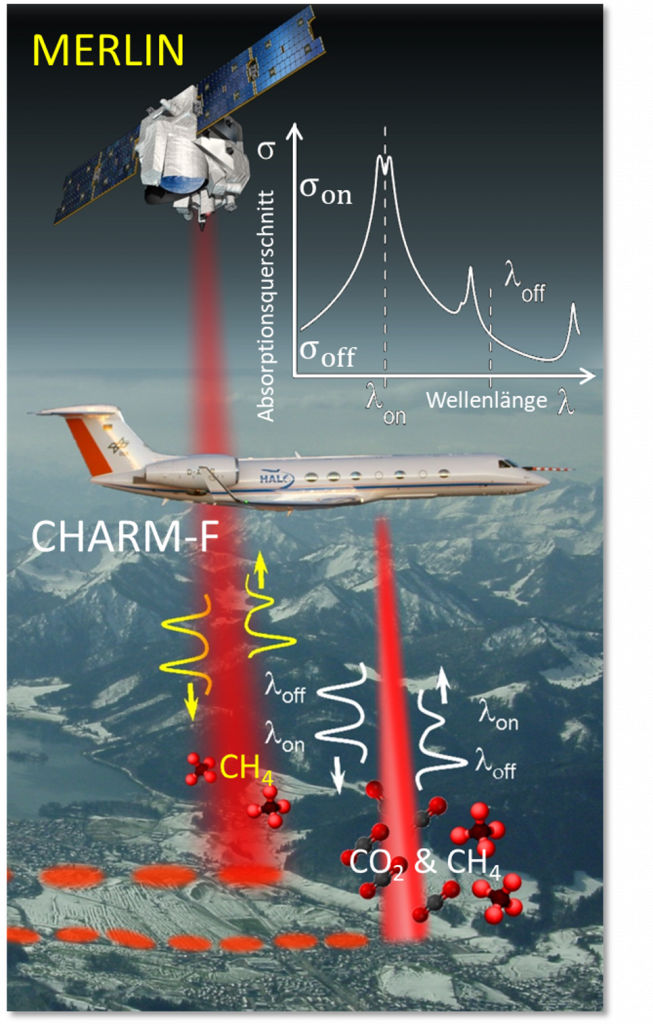
CHARM-F is one of the key instruments flown on the HALO aircraft. It was already operated onboard HALO during the CoMet 1.0 Mission in 2018. This instrument measures the partial column of the two important greenhouse gases CO2 and CH4.
CHARM-F was developed at the Institute of Atmospheric Physics of DLR, serving as an airborne demonstrator for the French-German climate mission MERLIN (Methane Remote Sensing LIDAR Mission) which aims to measure CH4 on a global scale.
CHARM-F (as well as the MERLIN instrument) uses the so-called Integrated Path Differential Absorption Lidar (IPDA) technique. With this technique hard target reflection in the near IR has the potential to deliver GHG column measurements from an aircraft or from space with unprecedented accuracy. IPDA largely eliminates the contribution of atmospheric scattering by particles and clouds which greatly affects the achievable accuracy of passive remote sensing instruments. Moreover, this technique can be applied during daylight or nighttime and at all latitudes since it does not depend on solar radiation.

The IPDA technique uses laser radiation at two different wavelengths which are differently absorbed by the target species that are reflected from a “hard target” which is either the Earth’s surface or cloud tops.
Homepage: Institut für Physik der Atmosphäre, Deutsches Zentrum für Luft- und Raumfahrt
Contact: Christian Fruck